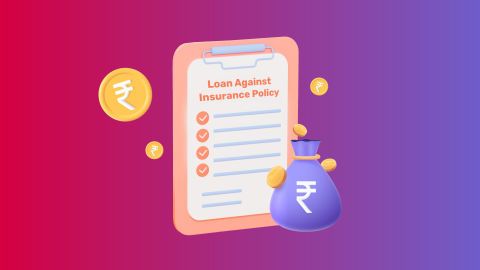Eligibility criteria for SBI life policy loan
Wondering if your SBI Life policy qualifies for a loan? Here's a general checklist to help:
- Your policy must have acquired a surrender value this usually happens after 2–3 years of regular premiums.
- You must be the policyholder and owner of the policy.
- Premiums must be up to date and the policy must be active.
The exact criteria may vary depending on the insurer and type of policy, but this is the typical baseline.
Still unsure? It’s worth checking your policy documents or connecting with a representative. View eligibility and required documents.
Curious to know if your plan qualifies? Apply now and find out in just a few clicks.
Types of SBI life policies eligible for loans
Below are the types of insurance policies that are usually accepted as collateral:
- Endowment policies – Offer a mix of savings and life cover.
- Money-back policies – Provide payouts at intervals during the term.
- Whole life policies – Offer lifelong coverage, building surrender value over time.
- ULIPs (Unit Linked Insurance Plans) – Eligible if they have accumulated enough surrender value.
- Traditional life insurance policies – With guaranteed returns and maturity benefits.
Each policy type has its own rules on surrender value, so eligibility may depend on tenure, premium payments, and value accrued.
Benefits of taking a loan against SBI life policy
Here’s why this kind of borrowing is a smart move for many:
- Quick disbursal: Once your policy is verified and assigned, funds are transferred quickly usually faster than traditional loans.
- No policy surrender: You continue to stay covered while accessing liquidity.
- Lower interest rates: Interest is usually lower compared to unsecured loans or credit card borrowing.
- Flexible repayment: Choose between EMIs or interest-only payments.
- Continued insurance protection: Your life cover stays intact, safeguarding your loved ones.
Think of it as a loan that works with your long-term goals not against them.
Want hassle-free liquidity backed by your policy? See benefits of policy-backed loans. and stay financially secure.
Documents required to avail loan on SBI life policy
To apply for a loan against your SBI life insurance policy, you need to submit a few essential documents for verification. These ensure your eligibility and help in quick loan processing.
- Duly filled loan application form
- Original SBI life insurance policy bond
- Identity proof (PAN, Aadhaar, Passport, etc.)
- Address proof (Utility bill, Aadhaar, Driving licence)
- Recent passport-sized photographs
How to apply for loan against SBI life insurance policy?
Here’s a step-by-step guide to getting started:
- Visit the loan against securities page.
- Click “Apply” and enter your full name, email, and mobile number.
- Under “Type of security”, choose “Insurance Policy”.
- Input your policy’s surrender value and your city of residence.
- Agree to the terms and click “Submit”.
- Verify your mobile number with the OTP sent to you.
- Our team will get in touch to guide you through the final steps, including policy assignment.
Once your details are verified and policy assigned, the funds are disbursed directly to your account. Follow this detailed application guide
Loan amount and interest rates
Your loan amount depends on the value of your policy:
- Loan amount: Up to 90% of the surrender value of your insurance policy.
- Interest rate: Varies by policy type and lender can go up to 24% per annum.
Your exact offer is confirmed after a detailed review of your policy’s details. Check current interest rates.
Tip: The higher your surrender value, the larger the loan you may be eligible for.
Repayment terms and conditions
The repayment terms for a loan against SBI Life policy are flexible and can be customised based on your cash flow:
- Choose EMIs if you prefer a regular and predictable outflow.
- Go with interest-only payments if you are planning to prepay later.
- You can also prepay partially or fully at any time without major penalties.
If the loan remains unpaid, the insurer or lender may surrender the policy to recover dues so keep track of repayment timelines.
What happens to your insurance cover?
The good news: taking a loan doesn’t cancel your insurance coverage. As long as you continue to repay the loan interest and principal as per terms, your policy stays active. However, if the policyholder unfortunately passes away while the loan is outstanding, the loan amount (plus any due interest) will be deducted from the death benefit. Your loved ones still receive the net sum assured ensuring continued protection.
Are there any tax implications?
Yes, potentially. There are tax implications.
- If the loan amount is used for investment or business purposes, the interest paid may be tax-deductible under the Income Tax Act.
- However, personal use (like travel or household expenses) may not qualify for such deductions.
Always consult with a tax advisor to understand how this applies to your situation. Have more questions? Read our FAQs.
Conclusion
A loan against your eligible life insurance policy like a ULIP or endowment plan gives you access to funds without breaking your long-term plan. With low interest, flexible terms, and uninterrupted insurance benefits, it’s a thoughtful alternative to traditional borrowing.
Ready to explore this smart borrowing option? Apply for a Loan Against Insurance Policy now.





